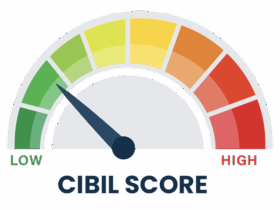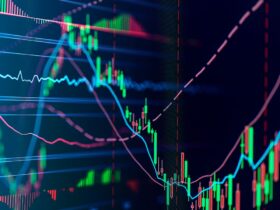A solid understanding of investing basics involves distinguishing between an index fund, often accessed through a mutual fund, and an exchange-traded fund (ETF). Firstly, ETFs are widely regarded as more flexible and convenient compared to most mutual funds. ETF can be traded with greater ease, similar to the trading of common stocks on a stock exchange, setting them apart from index funds and traditional mutual funds.
Furthermore, investors can acquire ETF in smaller increments and encounter fewer obstacles than mutual funds. This means that purchasing ETFs allows investors to bypass the need for specialized accounts and the associated documentation typically required for mutual funds. While there are similarities, it is essential to investigate the variations between index funds and ETFs.
What Are ETFs And Index Funds?
As mentioned, ETFs and Index Funds are similar in replicating an index such as the NIFTY 50 or the Sensex. However, passive investing options are not limited to broader indices alone. ETFs and Index Funds are available in various themes such as gold, commodities, banks, healthcare, etc. They can also track specific types of stocks like low-volatility stocks, value stocks, and international funds.
Index Funds and ETFs provide ample diversification across numerous securities, ranging from tens to thousands. Additionally, they offer a low expense ratio and the potential for solid long-term returns.
Consequently, it can be concluded that and Index Funds share many similarities, which often confuses investors when deciding which investment product is better for passive investing. This blog will focus on elucidating the distinctions between ETFs and Index Funds to assist with this decision-making process. ETFs
Features of ETF
- ETFs tend to have lower expense ratios but may incur higher trading costs.
- To invest in ETFs, investors must have a DEMAT account, as they are traded similarly to shares in the market.
- Investors can also receive dividend income from ETFs, which can be reinvested in the stock market.
- The performance of ETF is closely tied to the stock market’s liquidity, making investors vulnerable to losses during bearish market trends.
- Investors receive regular updates on the portfolio of their investments, usually daily.
Features of index funds
- Index Funds are mutual fund schemes that operate on an open-ended basis, allowing investors to invest in and redeem their investments per their preference conveniently.
- Index Funds allow investors to choose between growth and dividend options, enabling them to align their investment strategy with their risk tolerance.
- These funds are managed by fund managers who trade on behalf of investors, aiming to minimize losses or prevent them altogether while maximizing profits, thereby safeguarding the investment value.
Comparison Between ETFs and Index Funds- How Do They Stack Up?
Some key differences between index funds and ETFs based on certain factors are as follows:
| Parameters | ETFs | Index Funds |
| Definition | Exchange-traded funds that can be bought and sold on stock exchanges | Mutual funds that aim to replicate the performance of a specific index |
| Trading | Traded throughout the day on stock exchanges like individual stocks | Bought and sold at the end of the trading day at the net asset value (NAV) |
| Investment Method | Can be purchased at market price or limited order | Purchased at NAV |
| Expense Ratio | Generally lower expense ratios | Expense ratios vary but can be higher than ETFs |
| Flexibility | Can be bought or sold anytime during market hours | Bought or sold at the end of the trading day |
| Intraday Trading | Can be traded intraday, allowing for price fluctuations and market timing | No intraday trading, as prices are determined at the end of the day |
| Dividend Reinvestment | Dividends are reinvested automatically | Dividends can be reinvested or received in cash |
| Portfolio Disclosure | Holdings disclosed daily | Holdings are disclosed periodically, usually quarterly |
| Minimum Investment | Varies by ETF, often lower minimum investment requirement | Varies by the fund, typically higher minimum investment |
| Tax Efficiency | Generally more tax-efficient due to the in-kind creation/redemption process | May have higher capital gains distributions due to cash-based transactions |
What do Index Funds and ETFs Have in Common?
Both index funds and ETFs offer the advantage of bundling multiple individual investments, such as stocks or bonds, into a single investment. This feature has made them a popular choice among investors for several reasons:
- Index funds and ETF make it easier to put together a well-diversified portfolio. Investors may spread their risk across various assets and obtain exposure to a wide range of securities by investing in these funds.
- Due to their propensity to outperform actively managed mutual funds, ETFs and index funds have shown to be advantageous for long-term investors. Although they follow the underlying index’s performance, they often have positive long-term returns.
- These funds are passively managed, meaning their investments resemble those in an index like the S&P 500. This strategy decreases related management costs and eliminates the requirement for fund managers to make decisions actively.
On the other hand, actively managed mutual funds may excel in the short term due to fund managers making strategic investment decisions based on current market conditions and their expertise.
Conclusion
ETFs and index funds are great ways to invest for the future since they have low expenses, little upkeep, controlled risks, and long-term consistency in returns. It’s essential to keep in mind, though, that not everyone may be a good fit for these investing possibilities.
Consider each fund’s underlying assets and ensure you are happy with the fund’s diversification when choosing between index funds and exchange-traded funds (ETFs). It’s also critical to compare the expenditure ratio and any extra expenses related to the funds.
You may make an informed selection and choose the investment option that aligns with your financial objectives and preferences, ensuring you have a safe and prosperous future by carefully evaluating these variables.








